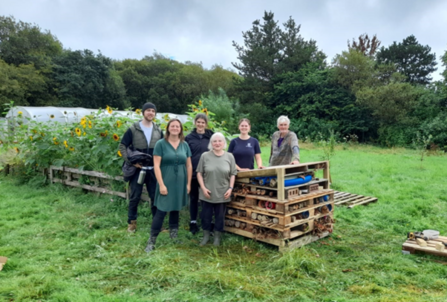As Nextdoor Nature comes to an end we want to celebrate the amazing communities we have worked with and the action they have taken to protect local wildlife. Nextdoor Nature set out to support communities in Swansea to take action for nature on their doorstep from urban to more rural areas. It followed a Community Organising approach putting communities at the heart of decisions.
From bulb planting to garden renovations the project worked on small and large, with individuals to Community Centres. One of the first groups to take part was Swansea’s YMCA Youth group. They worked with Swansea Museum to enhance their outdoor space for local pollinators. “The Natural History Gallery highlights several species now on Red List for Wales. It was important therefore to consider how we try and enhance biodiversity in a practical sense.” said Matt from Swansea Museum. The youth group planted bulbs in the museum’s outdoor space which can be enjoyed by all and are a new food source for bees, butterflies and the like.
GROW Cymru, a local women’s charity in Swansea City Centre were keen to learn about local wildlife. They asked for sessions from our Community Organising Officer, Marianne, about Swansea’s wildlife. They worked with The Wildlife Trust of South & West Wales over several months to run nature-based activities for their members. The project ended with two planters outside their town office for passers-by to admire full of flowers and garden herbs. Spaces like create connectivity for pollinators traveling through Wales’s city centres.



